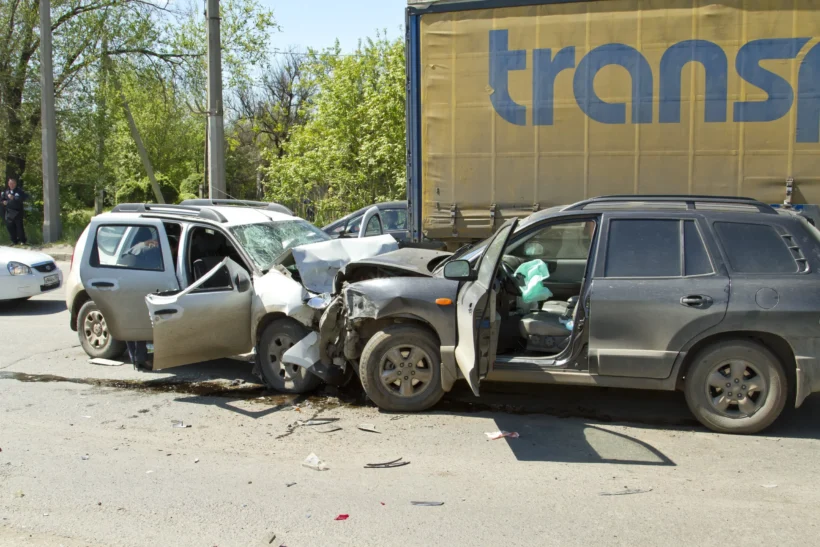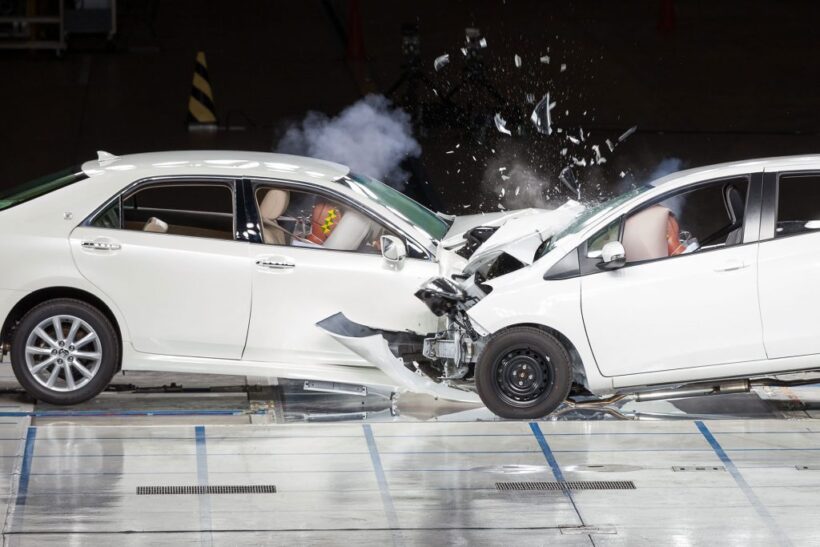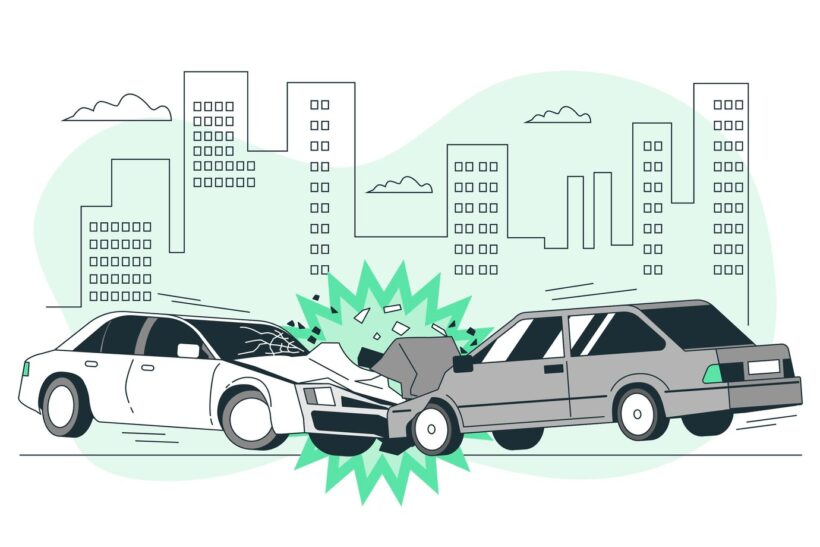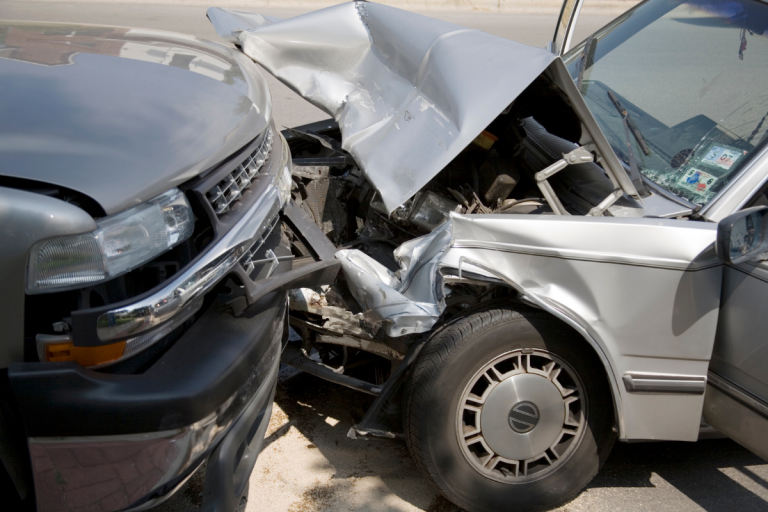According to the Insurance Information Institute, head-on crashes account for over 10% of all traffic fatalities in 2021. The high death rate associated with these wrecks underscores the need for defensive driving and collision avoidance. This blog post explains the mechanics of head-on collisions, common injuries sustained, and who is usually liable when this tragic event happens.
What is a Head-On Collision?

Head-on collision is well-known as frontal collision. When two vehicles collide with each other directly in front, resulting in a head-on collision. This type of collision usually occurs with a car, motorcycle, or truck. It also happens when the vehicle hits any fixed object, such as a cement barrier, a light pole, or a tree. The person involved in this accident often sustains life-threatening injuries and extensive property damage. In a head-on collision, there is a huge possibility that one or more people will also lose their lives.
Mechanics and Physics of Head-On Collisions
During a head-on collision, two vehicles slam into each other while moving in opposite directions. The combined closing speeds of both cars result in an extremely forceful impact. For example, if one car is traveling at 50 mph and the other at 30 mph, the effective collision speed would be 80 mph. Modern passenger vehicles are designed with crumple zones and other safety features to absorb some of this kinetic energy. However, the forces involved in a high-speed, head-on wreck typically overwhelm even well-engineered cars’ protections.
Common Causes of Head-On Collisions
A fatal head-on collision can be caused by a variety of factors and circumstances, either directly or indirectly. Remember to always contact a car accident lawyer regarding your legal rights in the event it happens. Here are some of the most frequent causes of this sort of motor vehicle collision:
- Distracted driving from cell phone use, adjusting music, eating, or attending to children or pets.
- Drowsy driving impairs reaction times and judgment.
- Driving under the influence of alcohol or drugs.
- Dangerous passing maneuvers on two-lane roads.
- Failing to dim high-beam headlights when approaching other cars at night.
- Fatigue and falling asleep at the wheel.
- Speeding, especially on curved roads with limited visibility.
- Severe weather conditions like heavy rain, fog, or snow.
Common Injuries from Head-On Collisions
Given the extreme forces generated in head-on crashes, it is unsurprising that they often produce severe, life-altering injuries:
- Traumatic brain injuries – Head-on crashes frequently cause traumatic brain injuries (TBIs), such as concussions or contusions.
- Spinal cord injuries – The sudden stopping motion of a head-on collision can damage the spine, severing nerves and causing paralysis. Spinal cord injuries may result in paraplegia or quadriplegia.
- Broken bones – Major bones are often broken in head-on collisions, including the ribs, the sternum, legs, arms, and hips. Fractures require surgery and long recovery periods.
- Internal organ damage – Internal organs like the heart, lungs, liver, and kidneys can be lacerated or ruptured due to blunt force trauma.
- Facial disfigurement – It is common for heads to hit the steering wheel or dashboard in a head-on collision, resulting in fractured facial bones, lost teeth, jaw injuries, and cuts requiring stitches or plastic surgery.
- Amputations – Severely broken limbs may need to be amputated if the damage is too extensive for bones or tissues to heal. Crush injuries can cause compartment syndrome, necessitating amputation.
How to Prevent a Head-on Collision?

It is always better to learn defensive-driving skills that safeguard you and others on the road. Here are some of the valuable tips that will help you avoid a head-on collision:
- Avoid Distraction: It is important to stay alert when driving on the road. So you should avoid using mobile phones, listening to music, eating, or any other activities. All these activities will keep you distracted while driving.
- Follow Traffic Rules: To avoid head-on collisions, it is necessary to obey all the traffic rules, such as lane markings, traffic signals, stop signs, and speed limits.
- Use Proper Headlights: When you are driving the car during the night, heavy rains, or fog, it is crucial to switch on your headlights. By doing so, it enhances your visibility to other drivers.
- Avoid Impairment: While driving under the influence of drugs, alcohol, or any other substances, it can affect your judgment and reaction time. So you should stop using alcohol or drugs to avoid accidents
- Maintain a Safe Distance: It is important to keep a safe distance between your car and other vehicles. This could help you avoid collisions when a sudden stop occurs.
- Maintain Your Car Properly: It is necessary to maintain your car in good condition. Before driving, you should check whether the steering, braking, or any other parts are working properly or not. So if it is not, then it is important to repair it immediately.
- Avoid Overtaking in Dangerous Conditions: To avoid accidents, you should not overtake on hills, curves, and other dark areas.
Who Is Liable in the Event of a Head-On Collision?

Typically, at least one of the vehicles involved in the head-on collision bears responsibility for its occurrence. A head-on collision occurs, for instance, when a driver loses their lane and collides with an approaching vehicle from the front while intoxicated or fatigued.
In some instances, if there is insufficient signage or confusing highways, those in charge of designing them may be held liable. Alternatively, if a defect in the vehicle causes a head-on collision, the manufacturer is liable.
It is critical to ascertain who is at fault in any car accident since, in most situations, the at-fault motorist can be held responsible for all car accident damages.
Final Thoughts
Given the possibly devastating consequences, doing your utmost to avoid head-on collisions is imperative anytime you get behind the wheel. However, if you or your loved ones are involved in this type of accident, you should seek legal help right away.

